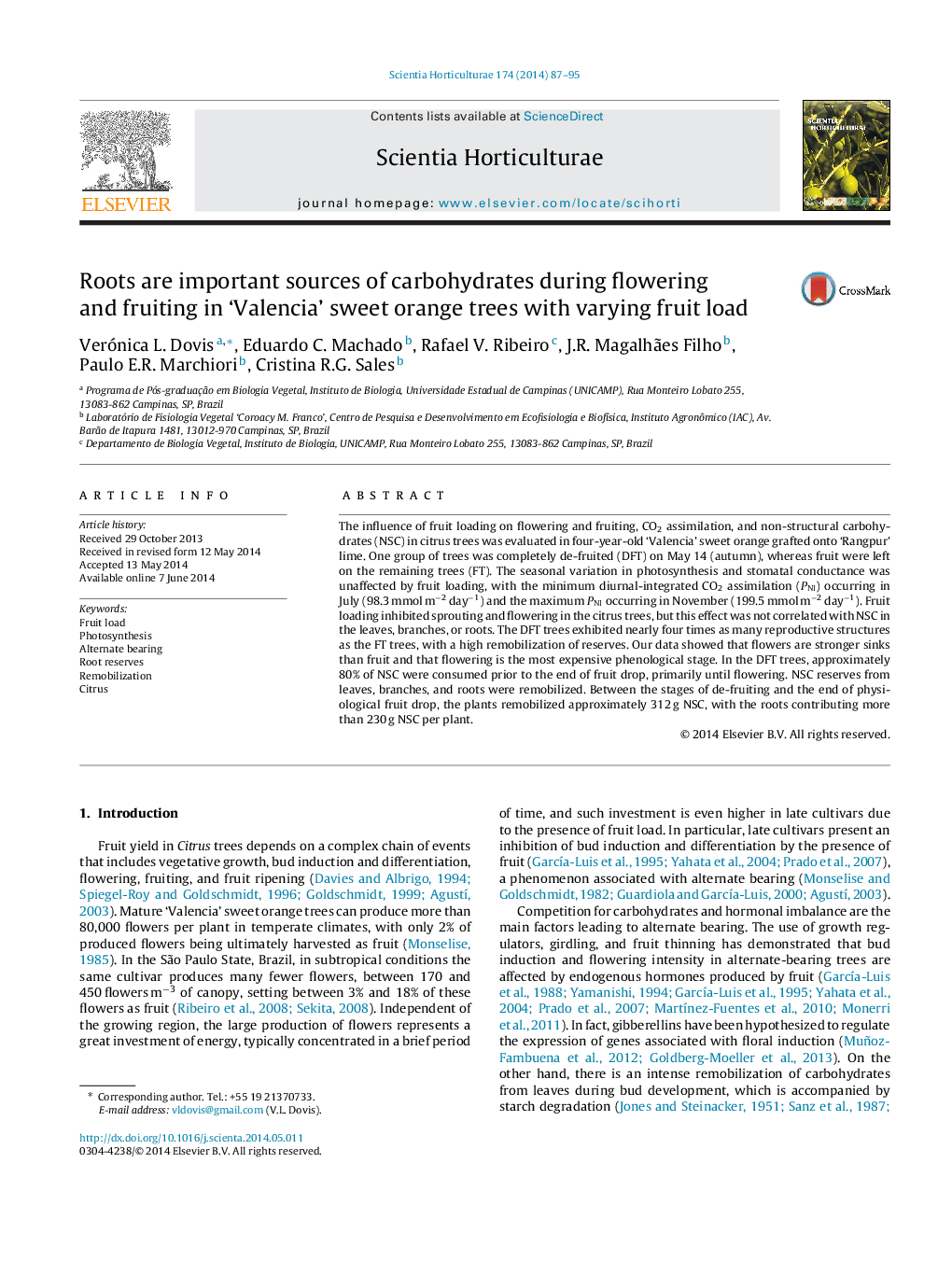| Article ID | Journal | Published Year | Pages | File Type |
|---|---|---|---|---|
| 4566712 | Scientia Horticulturae | 2014 | 9 Pages |
•Carbon balance was studied in whole citrus trees with varying fruit load.•Photosynthesis was not affected by sink demand.•Carbohydrates were remobilized from all plant organs to meet sink demand.•Roots were the main storage plant organ, containing 70% of reserves.
The influence of fruit loading on flowering and fruiting, CO2 assimilation, and non-structural carbohydrates (NSC) in citrus trees was evaluated in four-year-old ‘Valencia’ sweet orange grafted onto ‘Rangpur’ lime. One group of trees was completely de-fruited (DFT) on May 14 (autumn), whereas fruit were left on the remaining trees (FT). The seasonal variation in photosynthesis and stomatal conductance was unaffected by fruit loading, with the minimum diurnal-integrated CO2 assimilation (PNI) occurring in July (98.3 mmol m−2 day−1) and the maximum PNI occurring in November (199.5 mmol m−2 day−1). Fruit loading inhibited sprouting and flowering in the citrus trees, but this effect was not correlated with NSC in the leaves, branches, or roots. The DFT trees exhibited nearly four times as many reproductive structures as the FT trees, with a high remobilization of reserves. Our data showed that flowers are stronger sinks than fruit and that flowering is the most expensive phenological stage. In the DFT trees, approximately 80% of NSC were consumed prior to the end of fruit drop, primarily until flowering. NSC reserves from leaves, branches, and roots were remobilized. Between the stages of de-fruiting and the end of physiological fruit drop, the plants remobilized approximately 312 g NSC, with the roots contributing more than 230 g NSC per plant.
